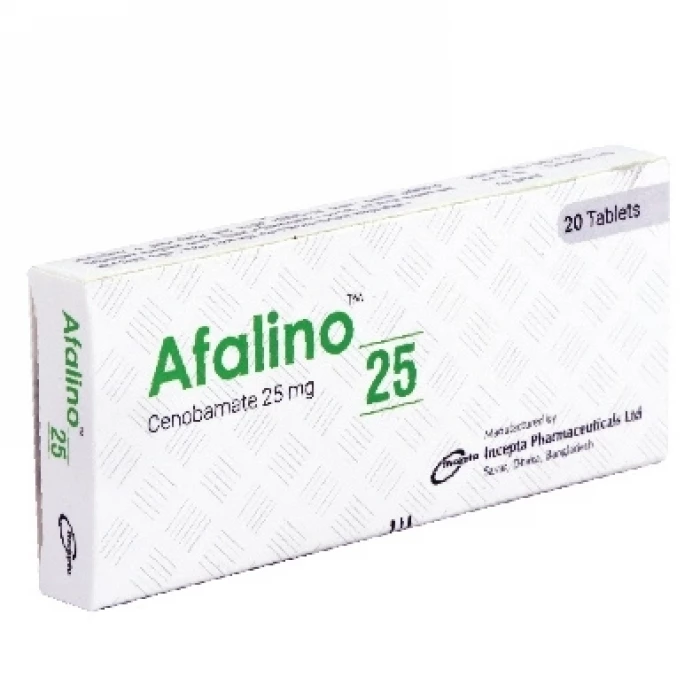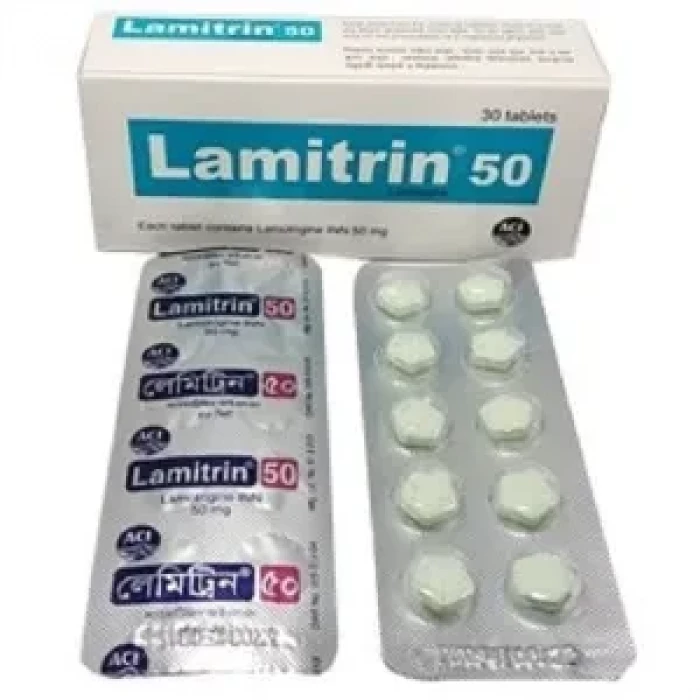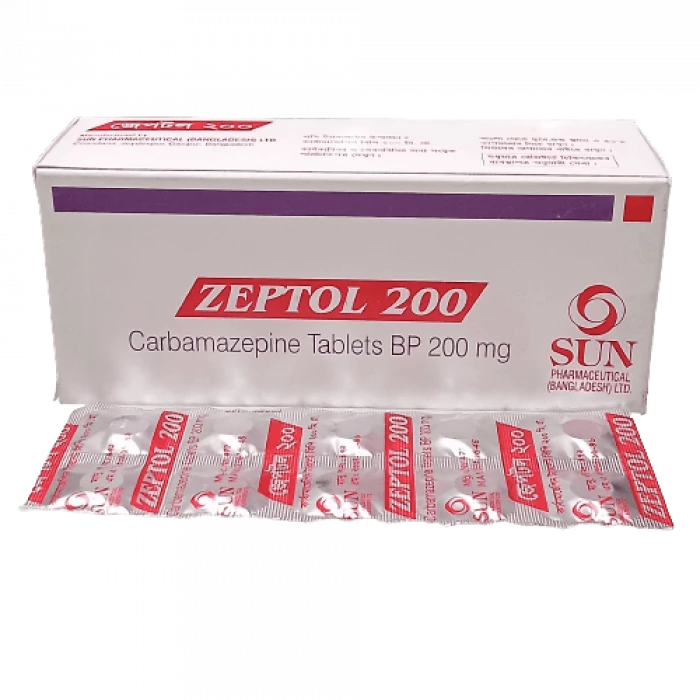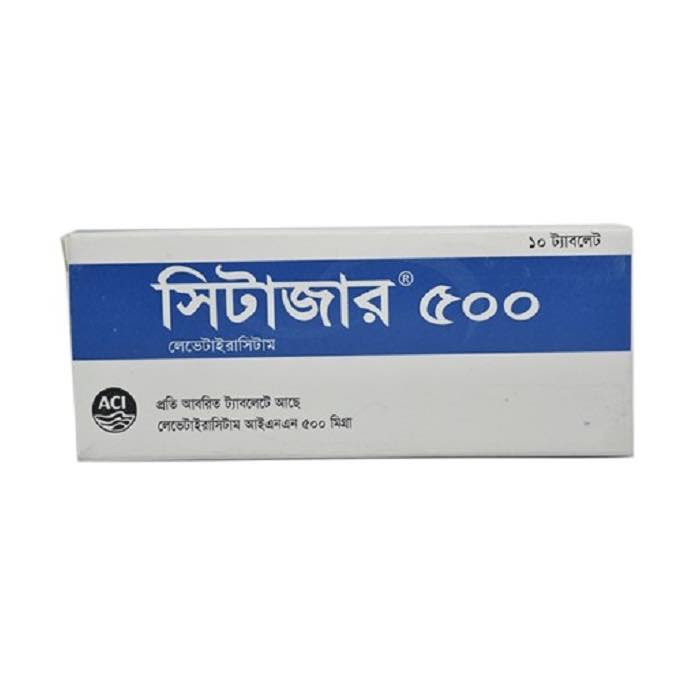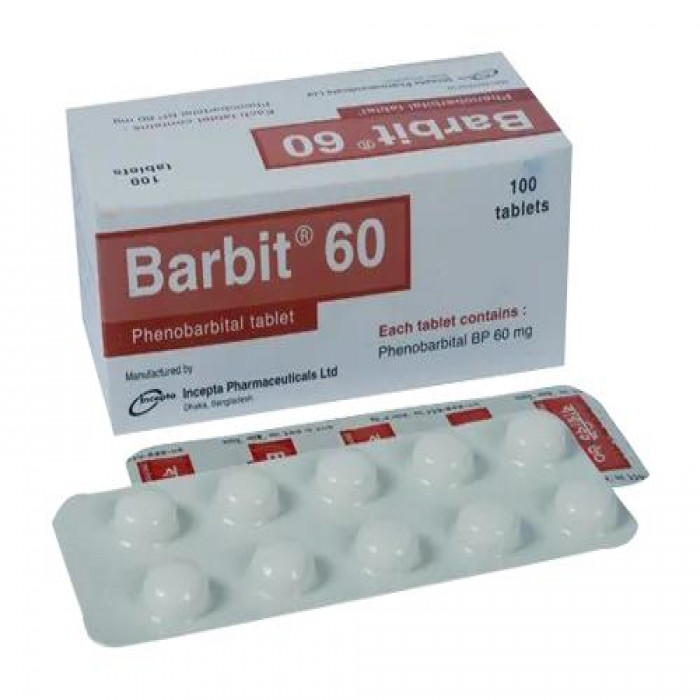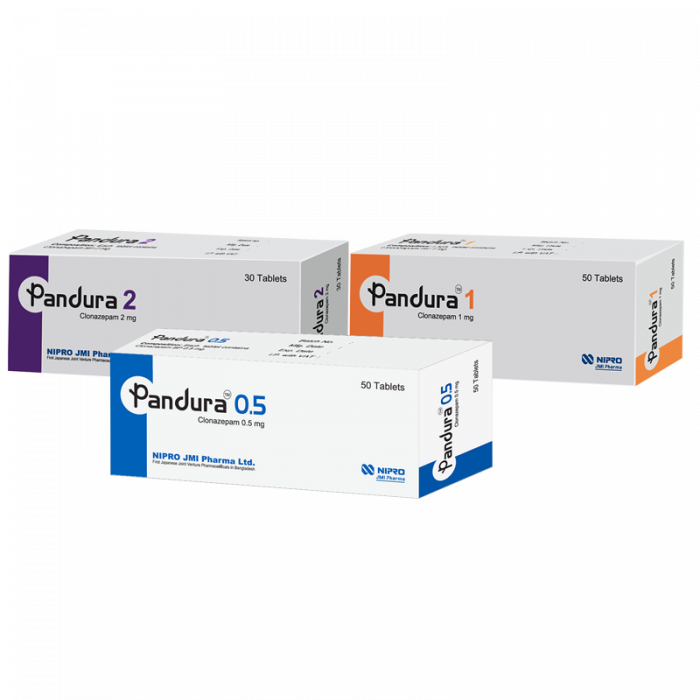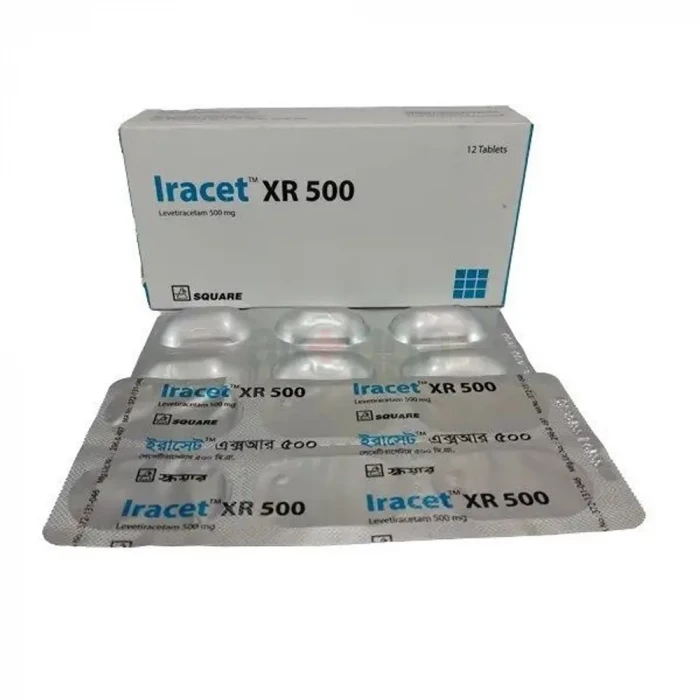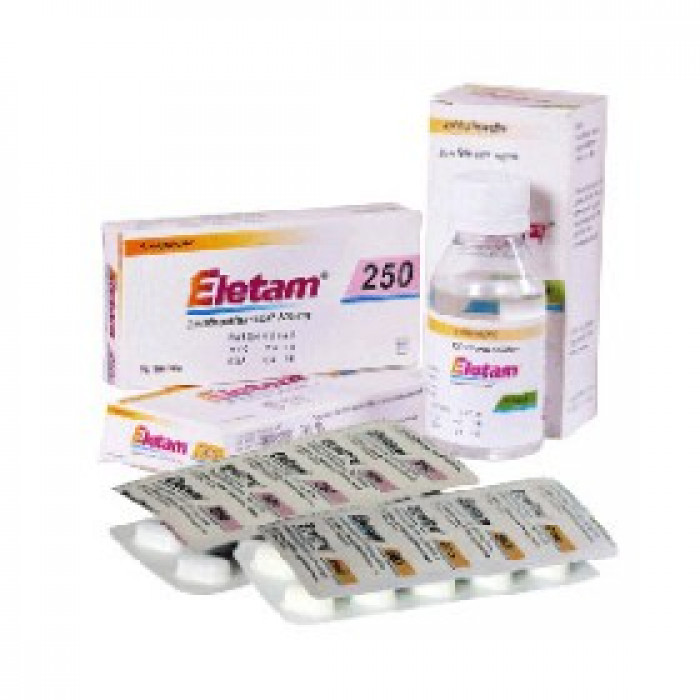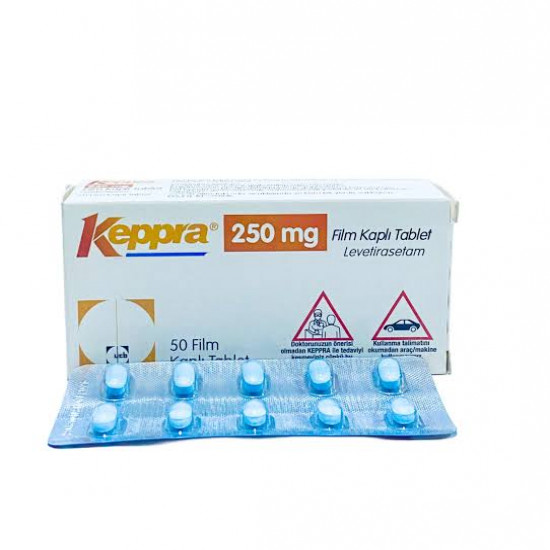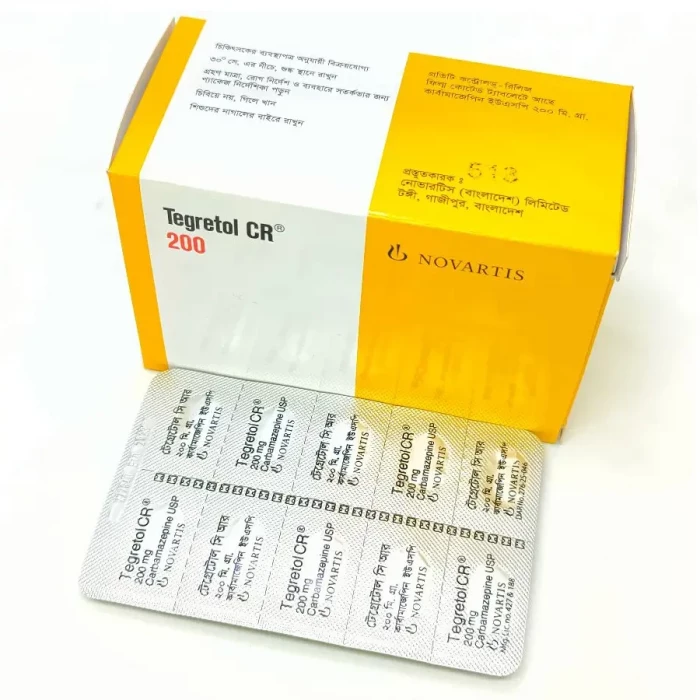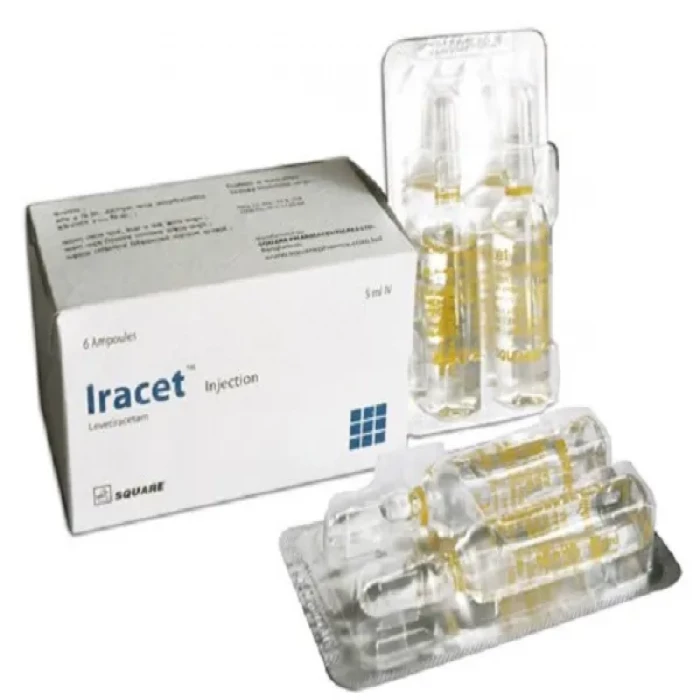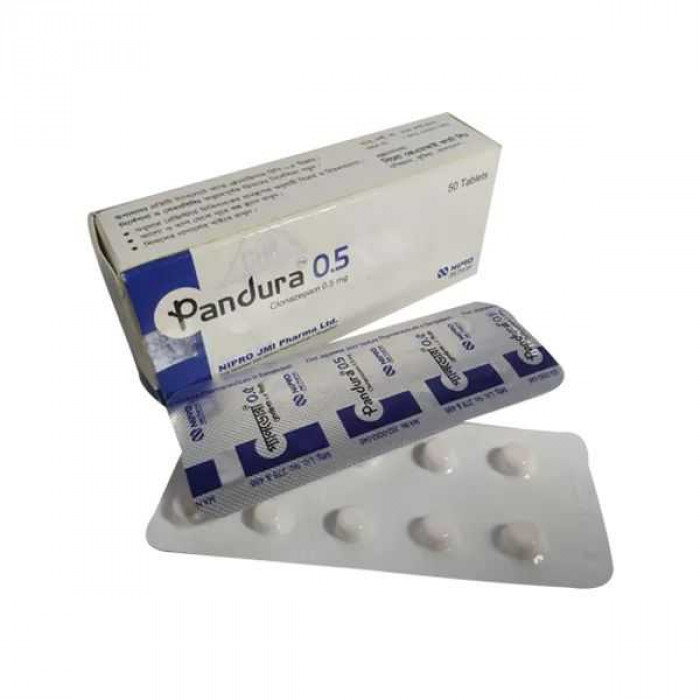
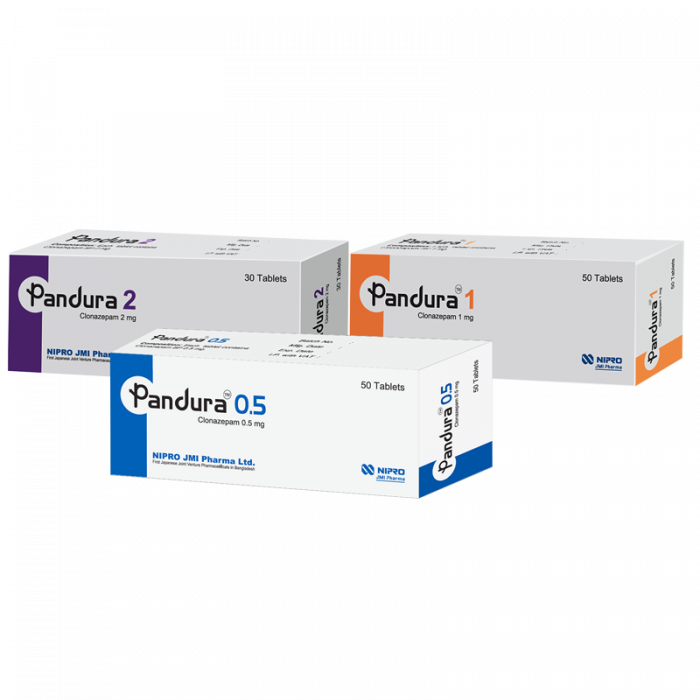
✔ 100% Authentic Product
👁️ Currently Viewing 4028
✅ Description:
Indications
It is indicated alone or as an adjunct in the treatment of the Lennox-Gastaut Syndrome (petit mal variant), akinetic and myoclonic seizures. It may be indicated in patients with absence seizures (petit mal) who have failed to respond to succinimides.
It is also indicated for the treatment of the panic disorder, with or without agoraphobia. Panic disorder is characterized by the occurrence of unexpected panic attacks and associated concern about having additional attacks worry about the implications or consequences of the attacks.
The effectiveness of Pandura 0.5 mg in long-term use, that is, for more than 9 weeks, has not been systematically studied in controlled clinical trials. The physician who elects to use Pandura 0.5 mg for extended periods should periodically reevaluate the long-term usefulness of the drug for the individual patient.
Pharmacology
Pandura 0.5 mg has common pharmacological properties of benzodiazepines, including anticonvulsant, sedative, muscle relaxation, and anti-anxiety effects. The central effects of benzodiazepines are mediated by an increase in GABAergic neurotransmission in inhibitory synapses. In the presence of benzodiazepines, the affinity of GABA receptors for neurotransmitters is increased through positive allosteric regulation, resulting in an increase in the effect of the released GABA on the post-synaptic transmembrane chloride flux.
There are also animal data showing the effect of clonazepam on serotonin. Animal data and human EEG studies have shown that clonazepam can quickly inhibit many types of paroxysmal activities, including spikes and wave discharges in absence, seizures (minor illnesses), slow-wave spikes, general wave spikes, Spikes with temporary or other locations, and as irregular. Peaks and waves. Generalized EEG abnormalities are more often suppressed than focal abnormalities. Based on these findings, clonazepam has a beneficial effect on generalized and focal epilepsy.
Dosage & Administration
Adults: The initial dose for adults with seizure disorders should not exceed 1.5 mg/day divided into three doses. Dosage may be increased in increments of 0.5 to 1 mg every 3 days until seizures are adequately controlled or until side effects preclude any further increase. Maintenance dosage must be individualized for each patient depending upon response. Maximum recommended daily dose is 20 mg.
The initial dose for adults with panic disorder is 0.25 mg given in two divided dose. An increase to the target dose for most patients of 1 mg/day may be made after 3 days.
Pediatric Patients: In order to minimize drowsiness, the initial dose for infants and children (up to 10 years of age or 30 kg of body weight) should be between 0.01 and 0.03 mg/kg/day but not to exceed 0.05 mg/kg/day given in two or three divided doses.
Interactions
Pandura 0.5 mg does not appear to alter the pharmacokinetics of phenytoin, carbamazepine, or phenobarbital. The effect of Pandura 0.5 mg on the metabolism of other drugs has not been investigated.
Contraindications
It should not be used in patients with a history of hypersensitivity to benzodiazepines, nor in patients with clinical or biochemical evidence of significant liver disease. It may be used in patients with open-angle glaucoma who are receiving appropriate therapy but is contraindicated in acute narrow-angle glaucoma.
Side Effects
The most frequently occurring side effects of Pandura 0.5 mg are referable to CNS depression. Experience in the treatment of seizures has shown that drowsiness has occurred in approximately 50% of patients and ataxia in approximately 30%. In some cases, these may diminish with time; behavior problems have been noted in approximately 25% of patients. Abnormal eye movements, aphonia, coma, tremor, vertigo, confusion, depression, amnesia, hallucinations, hysteria, increased libido, insomnia, psychosis & palpitations may also occur.
Pregnancy
Pandura 0.5 mg should be used in pregnancy only if the potential benefits outweigh the potential risk to the fetus and it is recommended that women receiving Clonazepam should not breastfeed.
Precautions
When used in patients in whom several different types of seizure disorders coexist, Pandura 0.5 mg may increase the incidence or precipitate the onset of generalized tonic-clonic seizures. This may require the addition of appropriate anticonvulsants or an increase in their dosages. The concomitant use of valproic acid and Pandura 0.5 mg may produce an absence status.
Storage Conditions
Keep in a dry place away from light and heat. Keep out of the reach of children
⚠️Disclaimer:
At ePharma, we’re committed to providing accurate and accessible health information. However, all content is intended for informational purposes only and should not replace medical advice from a qualified physician. Please consult your healthcare provider for personalized guidance. We aim to support, not substitute, the doctor-patient relationship.




